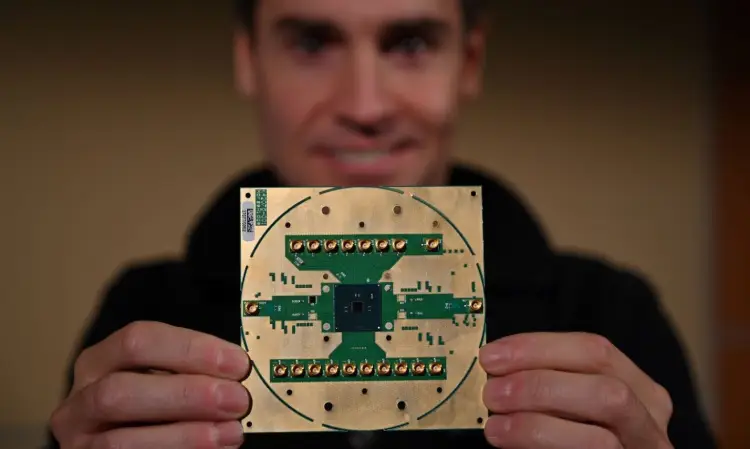
Intel has revealed a new so-called cryogenic control chip – code-named Horse Ridge after one of the coldest spots in Oregon – that it claims will speed up development of full-stack quantum computing systems.
The chip has been designed to operate at cryogenic temperatures of approximately four Kelvin: barely above absolute zero – a temperature so cold that atoms “nearly stop moving”, Intel said today.
The chip was developed alongside QuTech, a partnership between TU Delft and Dutch organisation TNO, and is fabricated using Intel’s 22nm FinFET technology. Intel said it willl “dramatically accelerate the company’s ability to design, test and optimize a commercially viable quantum computer.”
By creating a system-on-a-chip that can function at such cryogenic temperatures, Intel says it can pack it as close as possible to the quantum device, reducing noise and the need for hundreds of wires and other control electronics needed to run from control infrastructure to where the quantum process takes place.
Why Might Quantum Computers Need a Cryogenic Control Chip Like This?
Qubits, or the basic units of quantum computing, require calculations to be kept in quantum “superposition” for the duration of the computational cycle, but can easily be interrupted by noise. Avoiding interruption to the calculations requires temperatures of almost inconceivable cold.
(Superposition is a two-state quantum-mechanical ability to be in two different states at the same time, rather than the 0 and 1 vocabulary of binary code. Picture a globe: if bits can switch between its two poles, qubits can be both at the pole and anywhere else on the map, simultaneously.)

As IBM’s Bob Sutor described the company’s Q Experience quantum computer to Computer Business Review last year: “Signals for configuring and programming the quantum computer come from outside the machines, travel down coaxial cables where they are amplified and filtered, and eventually reach the quantum device with its qubits at 0.015K (-273.135 degrees C).”
“The result is returned the same way. We tackle noise by minimizing the exposure of the chips and cables to heat and electromagnetic radiation in all its forms, by minimizing device defects, by constantly improving the performance of the electronics, and by using novel mathematical schemes to compensate.”
“A scalable control system”
Designed to act as a radio frequency (RF) processor to control the qubits operating in the refrigerator, Horse Ridge is programmed with instructions that correspond to basic qubit operations. It translates those instructions into electromagnetic microwave pulses that can manipulate the state of the qubits.
Jim Clarke, Intel’s director of Quantum Hardware, said today: “While there has been a lot of emphasis on the qubits themselves, the ability to control many qubits at the same time had been a challenge for the industry.
“Intel recognized that quantum controls were an essential piece of the puzzle we needed to solve in order to develop a large-scale commercial quantum system. That’s why we are investing in quantum error correction and controls. With Horse Ridge, Intel has developed a scalable control system that will allow us to significantly speed up testing and realize the potential of quantum computing.
Intel is also working on “silicon spin” qubits, which have the potential to operate at slightly higher temperatures than current quantum systems require, it said, that could allow them to operate at 1 Kelvin or higher temperatures, which would “dramatically reduce” the challenges of refrigerating the quantum system.






